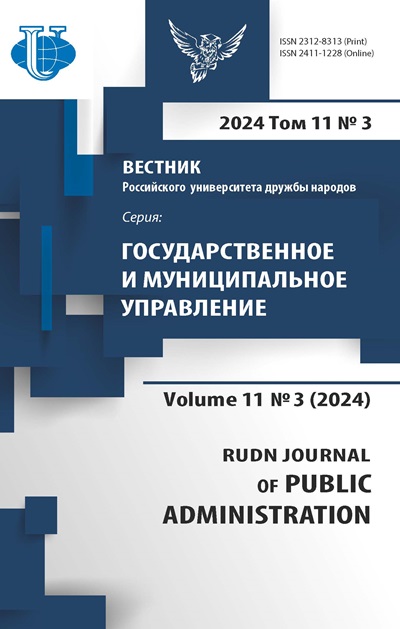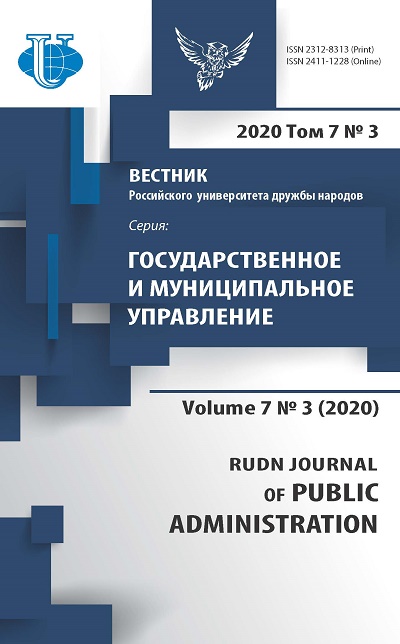Влияние кадрового потенциала, бюджетного планирования, политического бюджетирования и прозрачности для общественности на документы APBD и синхронизацию KUA-PPAS в правительстве района Муси Банюасин, Индонезия
- Авторы: Сюро М.1
-
Учреждения:
- Колледж социальных и гуманитарных наук (STISIPOL Candradimuka Palembang)
- Выпуск: Том 7, № 3 (2020)
- Страницы: 239-253
- Раздел: МЕЖДУНАРОДНЫЙ ОПЫТ ГОСУДАРСТВЕННОГО УПРАВЛЕНИЯ
- URL: https://journals.rudn.ru/public-administration/article/view/24520
- DOI: https://doi.org/10.22363/2312-8313-2020-7-3-239-253
Цитировать
Полный текст
Аннотация
Цель данного исследования - определить влияние кадрового потенциала, бюджетного планирования, политического бюджетирования и общественной прозрачности на синхронизацию между документом о бюджете региональных доходов и расходов, общей политикой бюджета региональных доходов и расходов и утвержденным бюджетом. Исследование проводится на основе анализа района Муси Банюасин в Индонезии. В исследовании приняли участие советники и должностные лица / сотрудники, участвующие в подготовке плана работы над бюджетом, в который было включено 33 региональных подразделения. Выборка включала в себя 127 представителей региональных подразделений. В исследовании используют первичные данные, полученные данные были проанализированы через множество циклов линейной регрессии. Гипотезы одновременно и частично проверяются F-тестом и t-тестом. Результаты проведенного исследования показали, что параллельное использование потенциала человеческих ресурсов, бюджетного планирования, политического бюджетирования и прозрачности для общественности оказывает положительное и существенное влияние на синхронизацию бюджетных документов, бюджетной политики и утвержденного бюджета. Результаты и концептуальный вклад данного исследования могут быть полезны в сфере государственного управления в Индонезии и других странах, особенно в деятельности правительства и парламента, так как они должны быть более последовательными и иметь высокую приверженность в отношении бюджетирования.
Об авторах
Мат Сюро
Колледж социальных и гуманитарных наук (STISIPOL Candradimuka Palembang)
Автор, ответственный за переписку.
Email: mmatsyuroh@gmail.com
ORCID iD: 0000-0003-4169-5497
доктор наук, лектор
Свадая Секип Уджин, 20, Палембанг, Индонезия, 30127Список литературы
- Mawarni D., Syukriy A. Pengaruh Pendapatan Asli Daerah Dan Dana Alokasi Umum Terhadap Belanja Modal Serta Dampaknya Terhadap Pertumbuhan Ekonomi Daerah (Studi Pada Kabupaten Dan Kota di Aceh). Akuntansi. 2013; 23 (2): 164 (In Ind.).
- Elfrina L., Ratnawati V., Wiguna M. Pengaruh Kapasitas Sumber Daya Manusia, Perencanaan Penganggaran, Politik Pengaggaran, Dan Informasi Pendukung Dengan Transparasi Publik Sebagai Variabel Moderating Terhadap Sinkronisasi Dokumen APBD Dengan Dokumen KUA-PPAS. Jurnal Online Mahasiswa Fakultas Ekonomi. 2014; 2 (1): 1-16 (In Ind.).
- Amirudin. Identifikasi dan Analisis Faktor-faktor yang Mempengaruhi Sinkronisasi Dokumen Anggaran Pendapatan dan Belanja Daerah dengan Dokumen Kebijakan Umum Anggaran dan Prioritas Plafon Anggaran Sementara (Studi Kasus Provinsi D.I Yogyakarta TA 2008). Yogyakarta: Universitas Gajah Mada; 2009 (In Ind.).
- Iskandar Metodologi Penelitian Pendidikan dan Sosial. Jakarta: Referensi; 2013 (In Ind.).
- Arniati E. Imelda Pengaruh Kapasitas Sumber Daya Manusia, Politik Penganggaran, Perencanaan dan Informasi Pendukung Terhadap Sinkronisasi Dokumen APBD Dengan Dokumen KUA-PPAS di Lingkungan Pemerintah Kota Tanjungpinang. Simposium Nasional Akuntansi (SNA) XIII. Purwokerto: Univesitas Jenderal Soedirman Purwokerto; 2010 (In Ind.).
- Simamora H. Manajemen Sumber Daya Manusia (Edisi III). Yogyakarta: SKIE YKPN; 2001 (In Ind.).
- Budiardjo M. Dasar-Dasar Ilmu Politik. Jakarta: PT. Gramedia Pustaka Utama; 2008 (In Ind.).
- Handayani B. Pengaruh Reformasi Penyusunan Anggaran terhadap Kualitas APBD Kota Semarang. Jurnal Dinamika Akuntansi. 2009; 1 (1): 3140. DOI: 10.15294/ jda.v1i1.1910 (In Ind.).
- Sugiyono Metode Penelitian dan Pengembangan (Research and Development/R&D). Bandung: Alfabeta; 2016 (In Ind.).
















